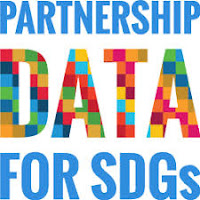B corp is a certification provided to companies that are for-profit (and proactively not evil). This certification is provided by a global non-profit called B Lab, stating that a company scores highly on social and environmental parameters and works like a social enterprise.
The four categories for testing the performance and some of the requirements are listed below -
1. Workers
- Are employees provided bonuses, stock options etc.?
- In the last fiscal year, did the employees receive a raise that at least met the inflation rate?
- What is the proportion of the highest paid employee to the lowest?
- How many paid days off are provided?
- Are there opportunities for career development?
- What is the ownership % of non-executives and non-founders?
- What % of employees have left the organization in the last fiscal year?
2. Community
- In the last year, did the company create jobs and serve clients in the local community?
- Are there any diversity and inclusion plans?
- What % of employees are women and from chronically underemployed communities?
- What % of revenue is donated to charity?
3. Environment
- Is the company operating in a green certified building?
- Are formal encouragements provided to reduce paper consumption, switching off lights etc.?
- Is water and energy use monitored and recorded?
- What % of the energy used comes from low-impact renewable sources?
- What is the source of electricity for operations?
- What % of the energy use comes from diesel generators, bio-fuels?
- Are environmental considerations vital during design of products/services?
4. Governance
- Is the financial performance of the company regularly shared with the employees?
- Is there a Code of Ethics policy?
- Is there an anti-corruption policy?
- Are bonuses tied to ESG performance?
- Are there independent members on the board and how often do they meet?
Upon answering all the questions and securing a score of 80 or more out of 200 (which is harder than it looks), a company is eligible to apply for the B Corp certification. After the verification of the supporting documents (and unless there is something sketchy), the B Corp label is provided. They have to pay an annual fee that can range from $500 to $50,000 to maintain the certification.
Fun fact: As of August 2018, there are about 2,600 certified B Corporations across 60 countries.
Source - https://bimpactassessment.net/
The four categories for testing the performance and some of the requirements are listed below -
1. Workers
- Are employees provided bonuses, stock options etc.?
- In the last fiscal year, did the employees receive a raise that at least met the inflation rate?
- What is the proportion of the highest paid employee to the lowest?
- How many paid days off are provided?
- Are there opportunities for career development?
- What is the ownership % of non-executives and non-founders?
- What % of employees have left the organization in the last fiscal year?
2. Community
- In the last year, did the company create jobs and serve clients in the local community?
- Are there any diversity and inclusion plans?
- What % of employees are women and from chronically underemployed communities?
- What % of revenue is donated to charity?
3. Environment
- Is the company operating in a green certified building?
- Are formal encouragements provided to reduce paper consumption, switching off lights etc.?
- Is water and energy use monitored and recorded?
- What % of the energy used comes from low-impact renewable sources?
- What is the source of electricity for operations?
- What % of the energy use comes from diesel generators, bio-fuels?
- Are environmental considerations vital during design of products/services?
4. Governance
- Is the financial performance of the company regularly shared with the employees?
- Is there a Code of Ethics policy?
- Is there an anti-corruption policy?
- Are bonuses tied to ESG performance?
- Are there independent members on the board and how often do they meet?
Upon answering all the questions and securing a score of 80 or more out of 200 (which is harder than it looks), a company is eligible to apply for the B Corp certification. After the verification of the supporting documents (and unless there is something sketchy), the B Corp label is provided. They have to pay an annual fee that can range from $500 to $50,000 to maintain the certification.
Fun fact: As of August 2018, there are about 2,600 certified B Corporations across 60 countries.
Source - https://bimpactassessment.net/













